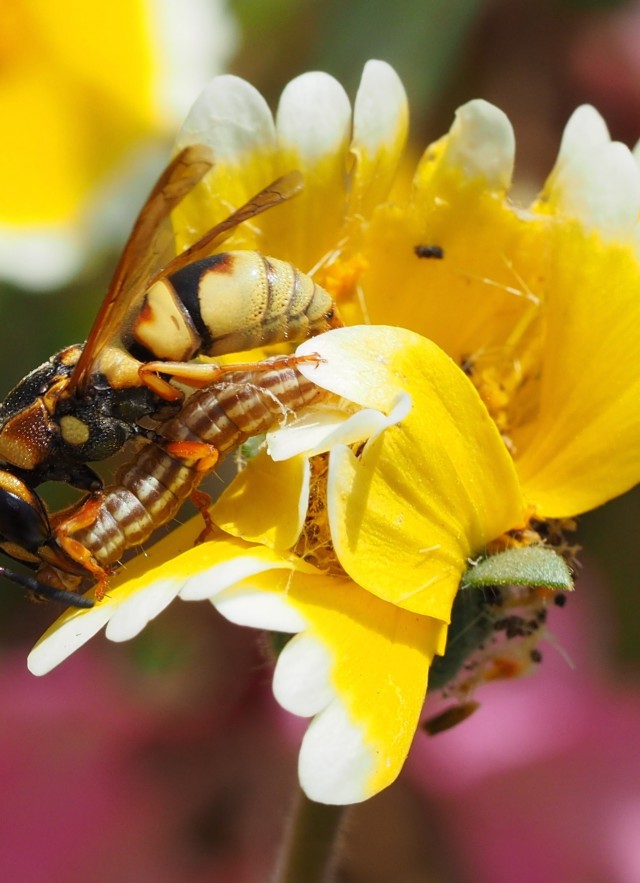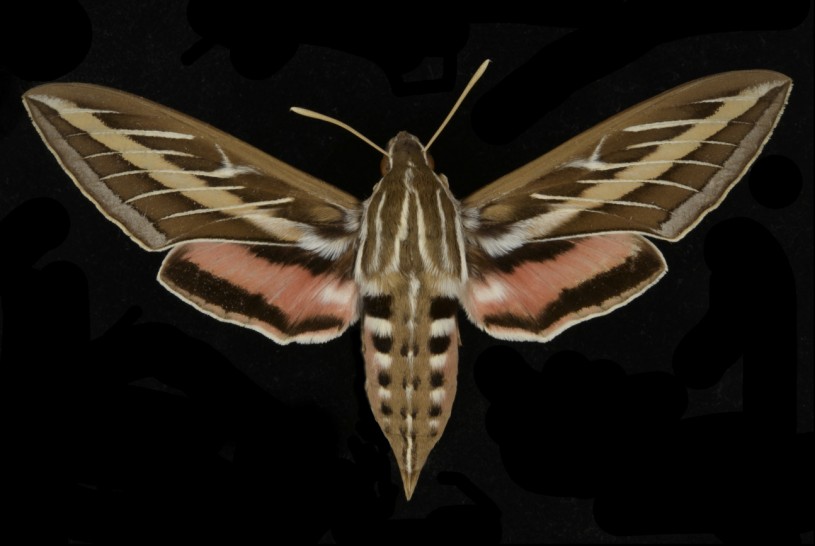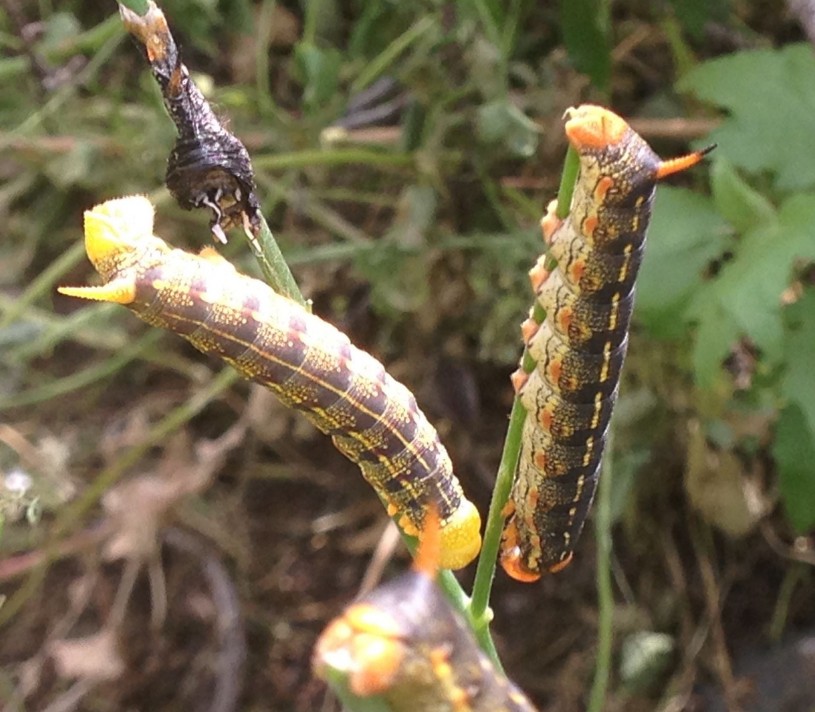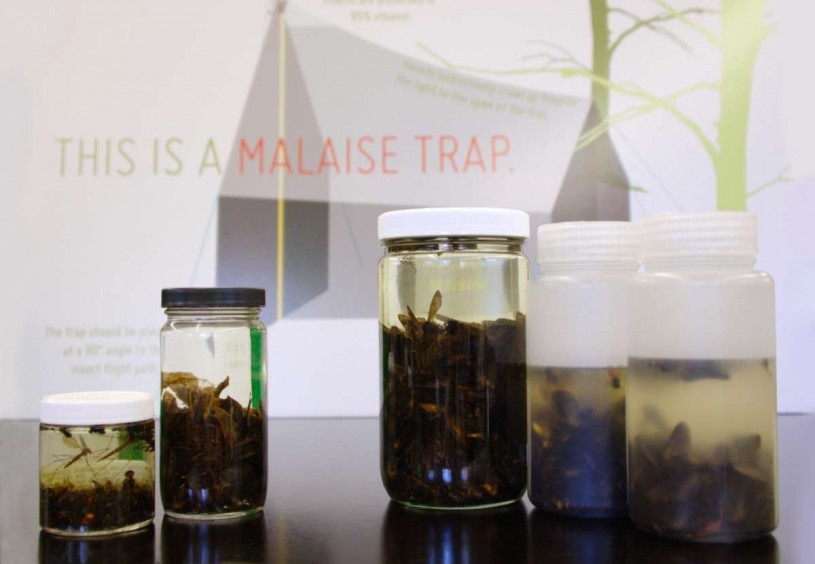It's a bird? It's a plane? It's a White-Lined Sphinx Moth!
At the end of every work day, before I head home into that lovely L.A. rush hour traffic, I walk through the Nature Garden at one of my favorite times of the day, the magic hour as the sun sets, the diurnal animals hunker down, and the nocturnal ones get ready for action.

At the end of every work day, before I head home into that lovely L.A. rush hour traffic, I walk through the Nature Garden at one of my favorite times of the day, the magic hour as the sun sets, the diurnal animals hunker down, and the nocturnal ones get ready for action. Even though spring time may blend into what feels like an endless L.A. summer, I see evidence of insects that have been on the down low for many months, now suddenly appearing out of hiding, full of vigor and looking for love. One such example is the glorious White-Lined Sphinx Moth, a crepuscular creature which feeds on the nectar of a variety of flowers. Silhouetted in the twilight with wings 3 inches wide, this insect is often mistaken for a hummingbird as it hovers in the garden.

Hyles lineata, the White-Lined sphinx moth. If you happen upon one of these beauties, take a close look at the incredible proboscis, the "straw" that they use to slurp up delicious flower juice. Sphinx moths have unusually long proboscises to access even the trickiest flower; in fact, the longest proboscis in the world belongs to a sphinx moth from Madagascar, measuring at 11 inches long! Our common local species is not quite so audacious, but it still brings to mind the problem moths and butterflies would have if they had to fly around with a long rope dangling out of their mouths. Fortunately, they can coil up their mouthparts and hold it close like Super Woman's lasso due to a unique "rubbery" material called resilin that allows it to spring back into shape after feeding.

Larvae of the White-Lined sphinx moth. Just as beautiful as the adult (to me!) is the larval stage of the sphinx moth, a jumbo caterpillar which also bears white markings on its body. Sphinx moth larvae are commonly called "hornworms" due to the spines at the end of their bodies; although they resemble stingers, they are soft and are not harmful to the touch. Unlike most moth and butterfly larvae, the caterpillar of this species is not at all picky about what types of plants it eats, which is why this sphinx moth is so common throughout North America.
Caterpillars are like hot dogs for wasps, but with more protein and healthier! Caterpillars can be "pests" if they eat the wrong thing (meaning, that special something a human planted to enjoy themselves), but they are also a great food source for a variety of other animals including other insects. If the caterpillar reaches its final larval stage without being eaten, it will burrow underground and begin its transformation into a pupa, where it will emerge as an adult when the weather is right. Last month brought some modest rain followed by a heat wave, which was the perfect storm for moth pupae that were overwintering. Our BioSCAN traps started to collect heaps of sphinx moths as well as other types of moths, filling up the bottles after a few days. Nothing says "spring is here!" like a jar full of moths.

A regular week's catch from the NHMLA Malaise trap on the left, compared with 2015's moth invasion week of March 13–20 on the right (all three jars together).